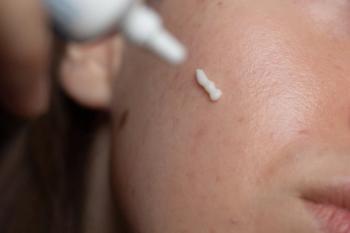
Inclusive Language in Dermatology May Improve LGBTQ+ Patient Outcomes and Data Accuracy, Study Finds
Key Takeaways
- LGBTQ+-inclusive language in dermatology can improve patient data accuracy and strengthen patient-clinician relationships, addressing healthcare barriers and improving outcomes.
- LGBTQ+ individuals face healthcare access issues due to discrimination and insurance challenges, increasing risks of mental health issues and violence.
LGBTQ+-inclusive language in dermatology enhances patient care, addresses health barriers, and improves outcomes for transgender individuals facing acne challenges.
Utilizing LGBTQ+-inclusive language in dermatology can lead to more accurate patient data and stronger patient-clinician relationships while addressing existing health care barriers and improving outcomes, according to a research letter published in
Individuals who identify as LGBTQ+ often experience barriers to health care, and the community faces substantial mistreatment in medicine.2 Previous research has found LGBTQ+ communities lack access to health care due to insurance access, diagnostic delays, discrimination, and denial of care. Ultimately, this contributes to increased risks of suicide and depression, substance use disorder, homelessness, and violence.
Specifically, in
Researchers conducted an inductive thematic analysis of LGBTQ+-inclusive language in 22 patient-reported outcome measures (PROMs) on acne.1 The study included 9 acne-specific, 4 dermatology-specific, and 4 health-related PROMs. Researchers found noninclusive LGBTQ+ language in 4 out of the 9 acne-specific PROMs.
Additionally, researchers identified heteronormative terminology in 3 of 6 acne-specific PROMs regarding intimate relationships. There was also gendered language in the Acne Quality of Life Scale PROMs. Researchers found the nonheteronormative term “partner” in 3 acne-specific, 3 dermatology-specific, and 1 health-related PROMs. There were 2 acne-specific PROMs that used language inclusive of some but not all LGBTQ+ identities. All PROMs included nongendered pronouns like “I” or “you” instead of “he” or “she.”
The use of LGBTQ+-inclusive language could promote the acquisition of accurate and relevant data for patient care and clinical trials while enhancing patient and clinician relationships. Inclusion of diverse populations could further develop and validate a greater understanding of potential language association.
The promotion of LGBTQ+-inclusive language throughout health care sectors is important now more than ever, especially since the FDA recently removed its draft guidance on diversity in clinical trials from its website days after President Donald J. Trump issued an executive order.4 The order cut down diversity, equity, and inclusion programs and prohibited federal recognition of gender identity apart from biological sex. Experts believe the bans will create widespread implications across the country, from increased barriers in a diverse health care workforce to reduced progress in precision medicine research.
Adjusting clinical language to reflect LGBTQ+ inclusivity could impact the comprehension of the data, requiring further revalidation, the authors noted.1 The study focused only on English language PROMs, which limited its scope.
“Addressing this health care barrier requires acknowledgment of outdated wording, performing in-depth validation research, and discontinuing dissemination of outdated versions,” the study authors concluded.
References
- Sia T, Abou-Taleb F, Yeung H, Chang ALS. LGBTQ+-inclusive language in patient-reported outcome measures for acne vulgaris. JAMA Dermatol. 2025;161(1):108-110. doi:10.1001/jamadermatol.2024.5077
- Franklin CC. Poorer health in the LGBTQ+ community due to fear of mistreatment. J Pediatr Soc North Am. 2023;5(S1). doi:10.55275/jposna-2023-625
- Radi R, Gold S, Acosta JP, Barron J, Yeung H. Treating acne in transgender persons receiving testosterone: a practical guide. Am J Clin Dermatol. 2022;23(2):219-229. doi:10.1007/s40257-021-00665-w
- Santoro C. The uncertain road ahead for health care after DEI rollbacks. The American Journal of Managed Care®. February 7, 2025. Accessed June 3, 2025.
https://www.ajmc.com/view/the-uncertain-road-ahead-for-health-care-after-dei-rollbacks
[This article was originally published by our sister publication,
Newsletter
Like what you’re reading? Subscribe to Dermatology Times for weekly updates on therapies, innovations, and real-world practice tips.


















